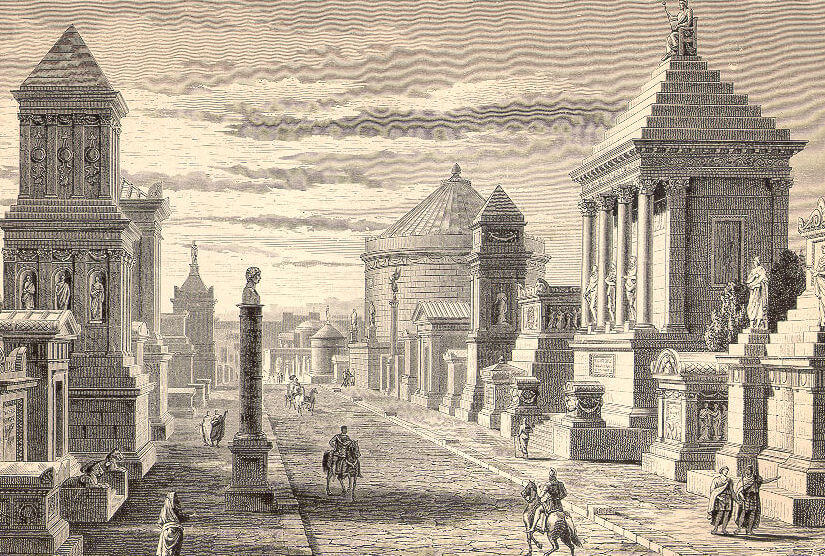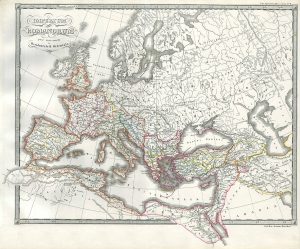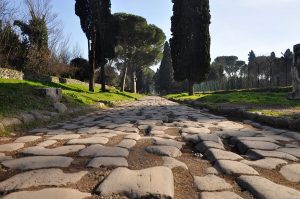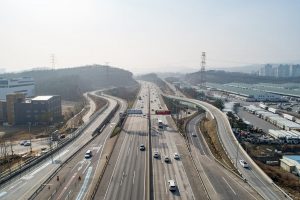
372 roads lead to Rome, and Caesar is taking them very seriously
14 of August of 2018
Brindisi is a small, half-forgotten town located near the southernmost point of Italy’s Adriatic coast, on the heel of a boot that has seen better days. The capital of Italy’s Apulia region, however, was once a very important Mediterranean port that served as the European port of entry for much Eastern merchandise. It was also the final destination of the queen of all roads in the Roman Empire, The Via Appia, or Appian Way.
While today the journey from Rome to Brindisi takes a little over five-and-a-half hours by car, two thousand years ago it would have taken quite a bit longer, especially if one had to walk, the upshot being that you could reach your destination by taking a paved, uninterrupted road that set out from the Forum itself, in the heart of the capital of the Republic, and later of the Empire. The Via Appia was symbolic of Roman power and served as a model for the construction of a network of roadways that would serve to keep the various territories connected and unified.
Stretching from what is today the United Kingdom as far as Syria, the greatest road network in history at the time reached some 400,000 kilometres in length during the time of maximum splendour of the Roman Empire. More than 80,000 kilometres of these roads were paved. In total, 372 roads led to the heart of Rome, and senators and emperors alike took the issue so seriously that many of these roads still survive to this day.

Map of the Roman Empire, now divided, circa 330 A.D.
Roads, or how to keep the empire undivided
So why did Ancient Rome need roads? At the time, most journeys were made either on foot or on horseback, and few could afford carriages. So why pave the roads and alter the terrain instead of just using the same pathways as always? In the opinion of Evan Andrews, a journalist for the History Channel, the roads were a vital element that consolidated both the power of Rome and the union of the Empire, for the following reasons:
- They were essential for maintaining military control. Following the construction of the Appian Way as a means of reinforcing control over the Apulia region in 312 A.D., the Romans began to build roads linking Rome with all their newly occupied cities, thereby reducing the time and effort required for the legions to reach their destination by allowing them to cover more than 30 kilometres in a single day.
- They were efficient. The main objective was to reduce travelling time, so the roads were built as straight as possible, using small bridges and tunnels to overcome geographical obstacles. Paving was laid on top of several layers of foundation and the roads included their own drainage systems.
- All roads led to Rome (and were signposted). It wasn’t easy to get lost in the Roman road network, as all the roads were signposted and all led to the Forum, in Rome, the Roman equivalent of kilometre zero. These factors both ensured good communications and reinforced the Empire’s seat of power.
- They included a network of inns and rest areas. Rest areas and stable facilities were stationed every 10 or 15 kilometres along the principal routes, which also featured inns and coach houses, those these were usually a little further apart, This led to the free circulation of couriers and tax collectors. In addition, the roads were often patrolled in an effort to prevent robberies and assaults.
- Road maintenance was essential. These roads were made to last as they provided Rome with a means of mapping territories and maintaining control even as far as the furthest reaches of the Empire and the known world. For this reason, repairs and maintenance were carried out on a regular basis.

The Appian Way today
A world without roads?
“Doc! We don’t have enough road to reach 140!”, “Roads? Where we’re going we don’t need roads!” And so we take the leap from ancient Rome to the year 2015, as imagined in the second film in the Back to the Future trilogy. Doc was wrong, however, as we reached the date in question three years ago and we still need roads. Our reasons may not be exactly the same as Caesar’s, but neither are they so different.
Spain today boasts some 165,483 kilometres of high-capacity paved roadway, according to data from the Ministry of Public Works. Local road networks add almost another half a million kilometres to this figure (the last official data is from 1998). In total, eight times more paved road in Hispania than in Ancient Rome. So, why do we still need so many roads?

- They contribute to business development
- Like Ancient Rome, roads improve overland communications and, as such, benefit commerce and economic development. Of the more than transported every year throughout Spain, about 80% are transported by road, according to data from the Ministry of Public Works.As Fátima Sánchez Galindo, a lecturer at the University of Murcia explains in an article, “Improvements to the road network result in reduced transport times and costs and improved accessibility in general. They favour a more efficient economic system and lead to effects such as the advancement of inter-regional business relationships and increased competitiveness for regions located further away from the principal business and development hubs.”
- They boost tourism
- Tourism existed even in Caesar’s time, though it was not as popular as it is today. Spain is now one of the world’s top destinations and tourism constitutes a fundamental element of the Spanish economy. In 2017 almost 82 million foreign tourists visited the country, nearly 13 million of these doing so by car. To this figure we have to add the millions of internal journeys undertaken for the same reason.
- They encourage investment and create jobs
- While it is not the only one, investment in infrastructures is one of the most common methods of energising the private sector with public funds. For example, following a number of years in which expenditure was reduced, in 2018 the Ministry of Public Works foresees an investment of some 2000 million euros in roads, a figure that will increase to 3000 million in 2019. According to ministerial sources, investment in these works is expected to create some 190,000 jobs.
- They improve general communication
- Aside from the transport of goods and other economic activities, reducing travel time is important for people in general. Roads improve both communication and territorial cohesion by eliminating, or at least minimising, geographical barriers that would otherwise keep people and regions isolated.

As stated by the World Economic Forum, “Roads are the arteries through which the economy pulses. By linking producers to markets, workers to jobs, students to school, and the sick to hospitals, roads are vital to any development agenda”… and for any empire wishing to exercise control over its territories, whatever the century.





There are no comments yet